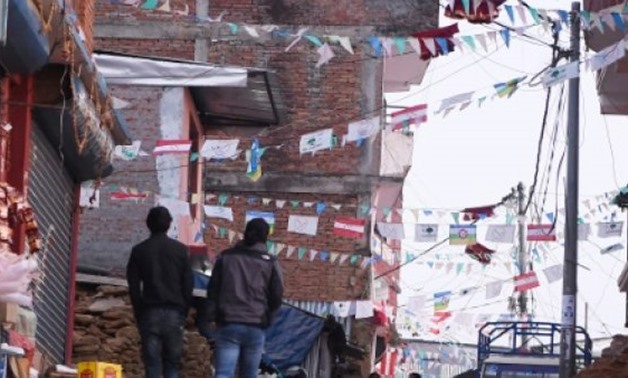
Around 3.2 million people across the north of the country, including areas badly hit by a devastating earthquake two years ago, are eligible to vote in Sunday's first phase - AFP / by Paavan MATHEMA
CHAUTARA - 26 Nov. 2017: Polls opened across northern Nepal Sunday for a historic election billed as a turning point for the impoverished Himalayan nation, hoping to end the ruinous instability that has plagued the country since the end of a bloody civil war a decade ago.
The two-phase elections for national and provincial parliaments are the first under a new post-war constitution born out of a peace deal that ended the 10-year Maoist insurgency in 2006 and set the country on a path from monarchy to democracy.
It took nine years after the end of the conflict for the new charter to be agreed as a series of brittle coalition governments bickered over the country's future as a federal democratic state.
Many hope that the elections, which will establish the country's first provincial assemblies, will bring an end to political turbulence and limit the impact of the horse-trading in Kathmandu on much needed development in the rest of the country.
Lines outside polling stations started to form early in Chautara, a town east of Kathmandu, as voters, wrapped up warm against the brisk morning mountain air, gathered to cast their ballots.
"We are very excited to vote and choose our representatives," said Ram Krishna Dangal as he waited to vote.
"We hope for a stable government after this that will implement long-term programmes."
Around 3.2 million people across the north of the country, including areas badly hit by a devastating earthquake two years ago, are eligible to vote in Sunday's first phase. The more populous south will vote in 10 days time.
- Three dominant parties -
Nepal's constitution, finally passed in 2015, lays out a sweeping overhaul of the political system and aims to devolve power away from the central government to seven newly created provinces.
Rules laid out in the new charter will weed out some fringe parties from the parliaments and raises the bar for ousting a prime minister, leading to hopes that the next government could be the first to last a full five year term.
Nepal has cycled through 10 leaders in the last 11 years and corruption has flourished, hampering growth as well as the recovery from the 2015 earthquake that destroyed half a million homes.
However, analysts warn that the impact of the changes could be limited, with the three parties that have dominated the political stage since the end of the conflict expected to take the lion's share of seats at the national and provincial level.
The Maoist Party of the former rebels has formed an electoral alliance with the communist CNP-UML, fielding candidates jointly in key races.
The powerful bloc has left the ruling party, the centrist Nepali Congress, on the back foot, forced to look to smaller parties in a bid to remain in power.
The Maoist insurgency and the drawn-out peace process that followed it were intended to create a more equal society. But the political instability and endemic corruption have undermined that goal.
Under the new constitution a proportion of seats in the federal and provincial assemblies are allocated to women and people from indigenous communities and the lowest Dalit caste.
Nepal's borders with India and China have been closed ahead of the vote and thousands of security forces have been deployed at polling stations.
There has been sporadic violence in the lead up to the polls, which has left dozens injured.
Results are expected a few days after the second vote on December 7.

Comments
Leave a Comment